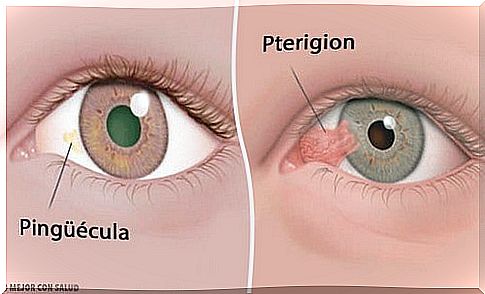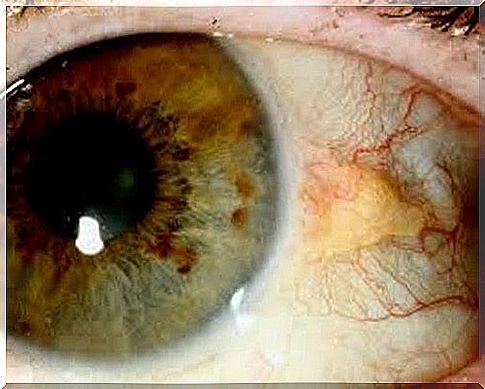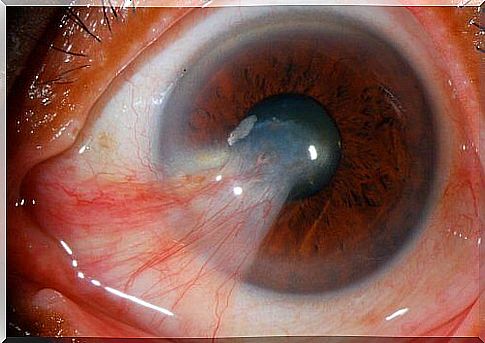Corneal Tumors: Pinguecula And Pterygium

The eyes are the fundamental organ of one of the most important senses: vision. Therefore, it is important to pay attention to any anomalies. In this sense, there are two very frequent corneal tumors or eye diseases ; the pinguécula and the pterygium.
Both conditions are the result of degeneration of the conjunctiva. The pinguecula appears as a small lentil or bud in the white area of the eye (sclera), sometimes unnoticeable. On the other hand, pterygium is the result of an abnormal growth of the conjunctiva due to an inflammatory process.
Although the size of the pinguecula is usually insignificant, it can increase over time. In most cases, its volume does not directly affect vision. In fact, some people may have more than one without knowing it.
Read on to find out what the most common causes of pinguecula are, their symptoms, treatments and their differences from pterygium.
What are the causes of corneal tumors?
According to experts at the American Academy of Ophthalmology, among the causes of pinguecula are:
- Exposure to dust and wind.
- Overexposure to ultraviolet light.
- Body fat.
- Dry eye syndrome.
- Hormonal changes.
- Surgeries.
- Consumption of some medications.
Pinguecula symptoms
- Itchy eyes or redness of the eyeball, especially near the cornea, pupil and iris.
- Eye dryness.
- Irritation of the affected area.
- Constant inflammation.
- Constant feeling of having something in the eye.

How is the pinguécula treated?
This condition usually does not require treatment. If it leads to uncomfortable symptoms, the ophthalmologist may recommend the use of lubricating drops.
However, in severe cases where this injury directly affects vision or gives rise to symptoms that do not disappear with the use of lubricating drops, surgical treatment can be resorted to.
Among these cases, there is a very severe inflammation of the conjunctiva of the eye, which gives rise to constant redness and itching.
It is noteworthy that the surgery performed is outpatient, with local anesthesia and that it does not take long. However, any surgical intervention carries certain risks, so it will always be the last option.
After the intervention, the patient must wear a maximum protection tampon for two days, unless the specialist recommends otherwise.

Differences between the pinguécula and the pterygium
Although both conditions are the result of anomalous processes in the conjunctiva, we speak of two different conditions.
Pterygium is an ocular anomaly that manifests itself through the formation of fleshiness in the eyes that is similar in color to the skin, different from the yellowish color of the pingueculae.
They are also not located in the same place. Pterygium usually develops from one end of the conjunctiva to the cornea, whereas pingueculae usually appear directly on the sclera and rarely affect the cornea.
Furthermore, if the pterygium reaches a considerable size, it can alter the surface of the eye and give rise to visual problems.

Similarities between the pinguécula and the pterygium
The first similarity, as we commented throughout the article, is that these two corneal tumors are the result of an anomaly of the conjunctiva, a thin layer of connective tissue that covers the eyeball.
Both conditions, in their onset, give rise to similar symptoms, so it is not uncommon for them to be confused.
To complete
Given these conditions, experts recommend taking preventive measures, especially avoiding its most direct cause, exposure to ultraviolet rays. This is achieved not using any type of sunglasses, but those that have a filter against UV rays.
Another important factor that triggers both conditions is age. They are much more frequent in people over 40 years of age. Routine eye examinations will allow timely detection of corneal tumors and other more serious eye problems.









